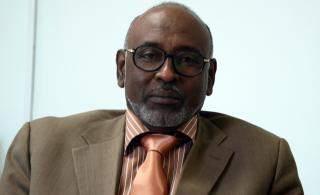Opinion
The Role of Oil Revenues in Economic Development during the Period (2000–2012)

Professor Ahmed Magzoub Ahmed
The use of Sudan’s oil revenues has been a subject of debate among political and economic elites. Some argue that oil revenues fueled the country’s development during the period 2000–2011, while others contend that they were not utilized effectively in alignment with national priorities. Many of these criticisms often stem from preconceived political biases or from individuals relying on hearsay rather than authentic performance data. Such politically driven narratives aim to undermine the achievements of the government at the time regarding the utilization of this resource for economic development.
Between 2000 and 2012—the peak years of Sudan’s oil extraction—there was a noticeable improvement in financial performance as oil revenues contributed significantly to the national budget. It is important to note that oil production in Sudan is governed by agreements between the investing companies and the Sudanese government. The revenue-sharing agreements between the government and the producing companies are managed by the Sudanese Petroleum Corporation, an entity under the Ministry of Petroleum. Oil exports are handled through open global tenders, and the government’s share of the proceeds is deposited into the Central Bank of Sudan. A percentage of these revenues (initially 5%, later reduced to 3%) is allocated to cover operational costs of the Sudanese Petroleum Corporation and its investments in the sector.
The government also invested heavily in building comprehensive infrastructure for the oil sector, including pipelines, export ports, storage facilities, and refineries. Significant expenditures were allocated to these projects, creating invaluable infrastructure for an industry with peak production of 500,000 barrels per day and an average production of 300,000 barrels per day. By 2019, this production had declined to 100,000 barrels per day and has since fallen further to 80,000 barrels.
During this period, Sudan’s economy achieved high growth rates, recognized by regional and global financial institutions. Growth peaked at 10.9% in 2007 and reached a low of 2.5% in 2011, the year South Sudan seceded. The average growth rate for 2000–2011 was 6.4%. This economic improvement led to increased government budgets and a rise in per capita income. Public spending grew annually, starting at 18.9% in 2000, reaching 49% in 2004, fluctuating between 25% and 31% in 2005 and 2006, and gradually slowing after 2009.
From 2000 to 2006, total government revenues amounted to 5,624 million dinars, of which oil revenues constituted 2,765 million dinars, or 49.2%. Total expenditure for the same period was 6,342 million dinars, with 1,417 million dinars spent on development—22.3% of total expenditure. Development spending accounted for 51.2% of oil revenues during this period. Furthermore, significant portions of oil revenues were directed towards developmental projects in Southern Sudan under the “Make Unity Attractive” initiative and to the states, with over 80% of these funds allocated to education, health, and water services—critical areas of human development. The total spending in this regard amounted to 2,701 million dinars, representing 97.7% of oil revenues during the same period, indicating that nearly all oil revenues were allocated to infrastructure and human resource development.
For the period 2007–2012, total revenues reached 124,408 million Sudanese pounds, with oil revenues contributing 52,781 million pounds, or 42.4% of total revenues. Total expenditure during this time was 160,507 million pounds, with 22,323 million pounds allocated to development—13.9% of total expenditure and 42.3% of oil revenues. A significant portion of oil revenues was directed to states and to Southern Sudan under the Comprehensive Peace Agreement of 2005, which came into financial effect in 2006. Total spending on Southern Sudan amounted to 78,641 million pounds, exceeding total oil revenues for the period, representing 148.7% of oil revenues.
This analysis compares development spending, including allocations to states and Southern Sudan, against oil revenues, without factoring in expenditures on wages, state services, centralized budgets (e.g., foreign relations), and security. These latter expenditures indirectly contribute to community development and support the broader economy. Moreover, the emphasis on security expenditures significantly improved investment conditions, placing Sudan among the top investment-attracting nations during this period.



